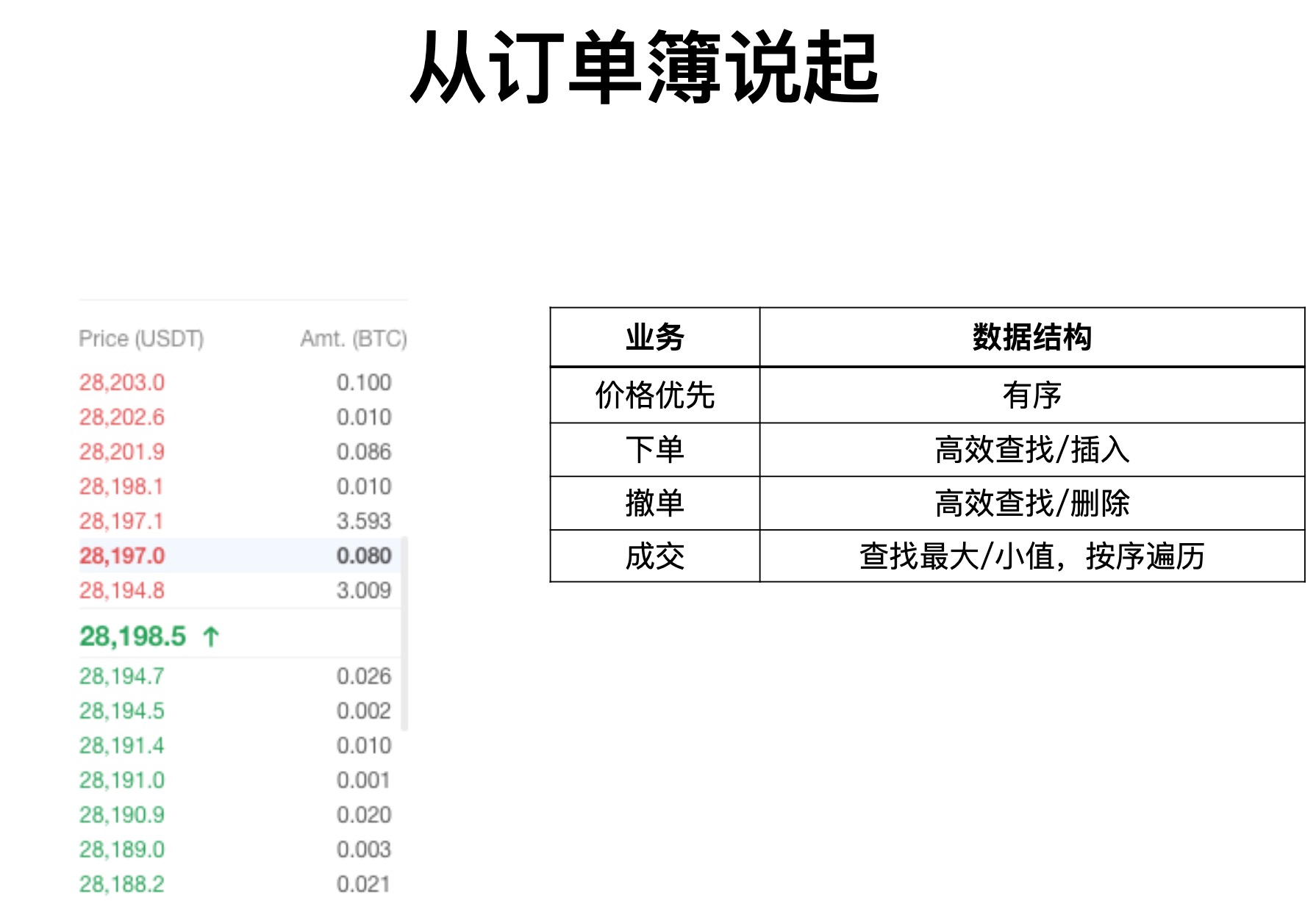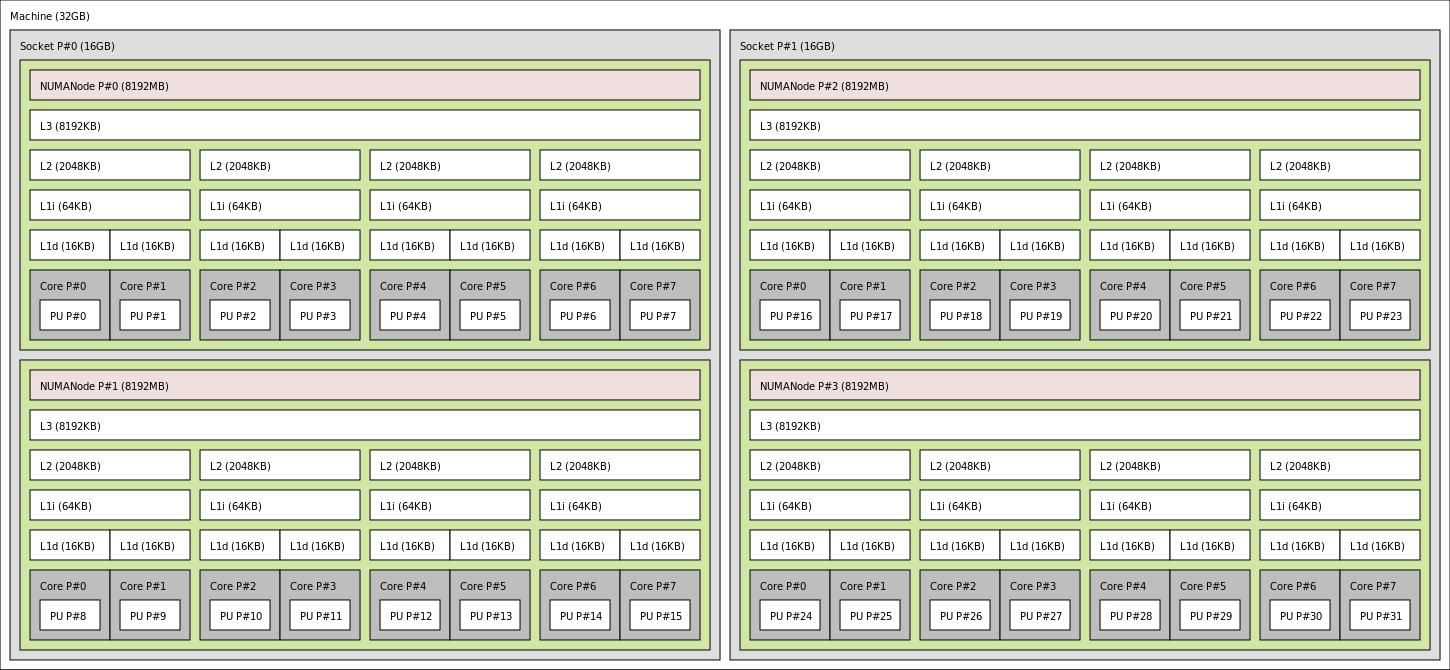可变基数树分享
使用可变基数树优化交易订单簿以及使用SIMD硬件加速查找
主要参考论文: https://db.in.tum.de/~leis/papers/ART.pdf
背景
- 内存变得容量更大更便宜,整个数据库/存储引擎可以放到内存
- 传统的内存数据索引一般是平衡二叉树 在现代的硬件上效率不高
- 另一类索引结构,hash表 只支持单点查找,范围查找不好
索引效率是决定性能的关键因素
前言
T树和二叉树 硬件支持不好 on modern hardware architectures
B+ tree 缓存敏感,但是update代价比较大
The k-ary search tree and the Fast Architecture Sensitive Tree (FAST) 使用数据级并行性与单指令多数据 (SIMD) 指令同时执行多重比较。此外,FAST 使用的数据布局通过优化利用缓存行和 TLB 来避免缓存未命中。但两种数据结构都不能支持增量更新。
哈希表随机分散了键,只支持点查询;另一个问题是大多数哈希表不能优雅地处理增长
GPU 可以实现比 CPU 更高的吞吐量。然而,使用 GPU 作为专用索引硬件还不实用,因为 GPU 的内存容量有限,与主存的通信成本很高,
Trie

Trie 大多数研究都集中在索引字符串上,但我们的目标是索引其他数据类型。因此,我们更喜欢术语基数树而不是 trie,因为它强调了与基数排序算法的相似性,并强调可以索引任意数据而不仅仅是字符串。
在实际实现上,“基” 一般是 2^K中的 K,下面解释。
基数数是什么结构?
按字母顺序排列的字典书中的拇指索引。一个词的第一个字符可以直接用来跳到所有以该字符开始的词。在计算机中,这个过程可以用接下来的字符重复进行,直到找到一个匹配的字符。作为这个过程的结果,所有的操作都有O(k)的复杂性,其中k是key的长度。

特点:
- 路径压缩和懒惰扩展,使ART能够通过折叠节点有效地索引长键,从而降低树的高度
- 根据子节点的数量动态地选择结构
- 树的高度与Node个数无关,与key长度有关
- all insertion orders result in the same tree
- key是隐藏的,可以从路径获得
- 不需要平衡
- Key按字典顺序存储
可伸缩的node

node span


影响因素:
- Span越⼤, ⾼度越低
- Span越⼤ , 空间占⽤越⼤
问题: 选多大的span? 1. 折中 2. 可变的node类型
-> 可变基数树 node类型可变
处于性能考虑,节点的类型比较少,如果是几十类,resize的代价会很高
Inner Nodes

- 插入时,当前node大小没有空间,扩展到大一级的node,同样,缩小时resize到小一级的node。
- each inner node has at least two children.
Leaf Nodes

简单的例子
1 | put(0x3FAA01L,"0x3FAA01L"); |

例子二
1 | map.put(2,"2"); |

算法
search
1 | get(key) |

Insert
1 | put(key , value){ |
grow & shrink
1 | grow(){ |
分裂

1 | int checkPrefix(long key) { |
性能数据对比
| random | ART(ms) | TreeMap(ms) | diff |
|---|---|---|---|
| put (16M keys) | 12857 | 40562 | 215% |
| search (16M keys) | 7253 | 25413 | 250% |
| foreach (16M keys) | 695 | 2334 | 235% |
| put (64k keys) | 73 | 105 | 43% |
| search (64k keys) | 25 | 28 | 12% |
| foreach (64k keys) | 7 | 14 | 100% |
| put (1M keys) | 896 | 1420 | 58% |
| search (1M keys) | 373 | 684 | 83% |
| foreach (1M keys) | 52 | 73 | 40% |
| 连续 | ART(ms) | TreeMap(ms) | diff |
|---|---|---|---|
| put (16M keys) | 1999 | 4302 | 115% |
| foreach (16M keys) | 152 | 192 | 26% |
| put (650K keys) | 174 | 191 | 9% |
| foreach (650K keys) | 17 | 35 | 100% |
分析性能产生的原因
- key越多,差距越大
- 随机的比连续的差距大
随机的比连续的差距大 –> 考虑缓存的影响。
对比二者的结构:


高速缓存存储器结构
撮合服务器 CPU型号是 Intel(R) Xeon(R) Platinum 8369B CPU @ 2.70GHz, intel官网没有( L3 cache是49M,见附录),应该是订制的,找同类型的CPU参数:



考虑一个计算机系统,其中每个存储器地址有 m 位,形成 M= 2^m个不同的地址。这样一个机器的高速缓存被组织成一个有 S=2^s个高速缓存组(cache set)的数组。每个组包含 E 个高速缓存行(cache line)。每个行是由一个 B=2^b 字节的数据块(block)组成的,一个有效位(valid bit)指明这个行是否包含有意义的信息(为了方便),还有 t = m-(b+s) 个标记位(tag bit)(是当前块的内存地址的位的一个子集),它们唯一地标识存储在这个高速缓存行中的块。



不命中时的行替换
替换组中的哪一行(没有空行)?替换策略:
- 最不常使用(Least-Frequently-Used,LFU)
- 最近最少使用(Least-Recently-Used,LRU)
所有这些策略都需要额外的时间和硬件。
另外的优化途径-SIMD
硬件支持


语言支持
Java JEP 417: Vector API (Third Incubator) on jdk17/18
- https://openjdk.org/jeps/414
- https://openjdk.org/jeps/417
例子
1
2
3
4
5
6
7
8
9
10
11
12
13
14
15static final VectorSpecies<Integer> SPECIES = IntVector.SPECIES_256;
void multiply(int[] array, int by) {
int i = 0;
int bound = SPECIES.loopBound(array.length);
IntVector byVector = IntVector.broadcast(SPECIES, by);
for (; i < bound; i += SPECIES.length()) {
IntVector vec = IntVector.fromArray(SPECIES, array, i);
IntVector multiplied = vec.mul(byVector);
multiplied.intoArray(array, i);
}
for (; i < array.length; i++) {
array[i] *= by;
}
}
Vector Api
| 组件 | items |
|---|---|
| VectorSpecies | SPECIES_512, 256, 128… |
| Vector | ShortVector, LongVector |
| VectorMask | firstTrue() , trueCount() , anyTrue()… |
| VectorOperators | EQ , LT, GT… |
用SIMD 优化 radix tree的查询
1 | short[] sss = new short[16]; |
node 48、256 search
由于VectorApi不支持指针和bool, 对于children多的node,维护一个与children对应的bool flags[childrens],通过 SIMD批量获取 index后,children.get(index)。
总结
- 适合Key⻓度固定或较短的场景
- 较大的Span和垂直压缩显著提高性能
- 可变的Node大小,显著提高空间利用率,并充分利用SIMD指令
- 使用数组存储数据对缓存更加友好
- 只支持字典序,不适合BigDecimal
- 可变Node与node256 性能近似,与TreeMap比显著提升

